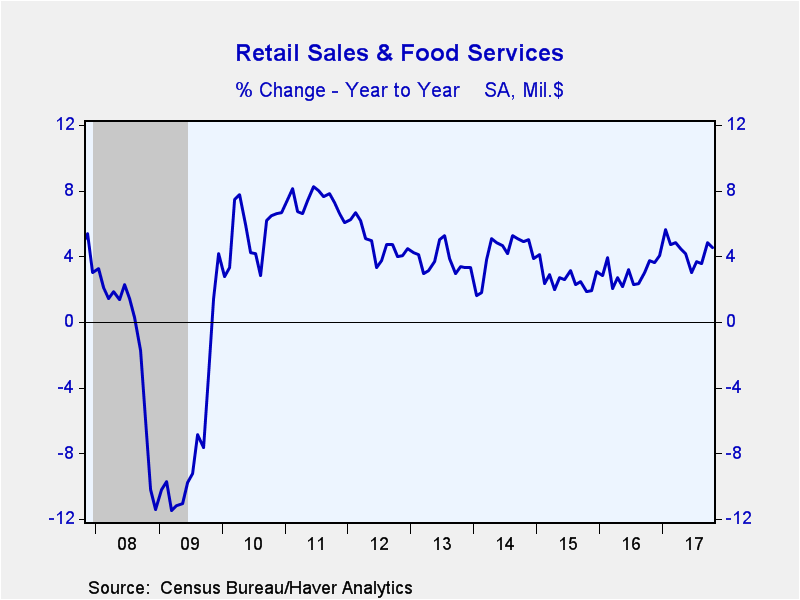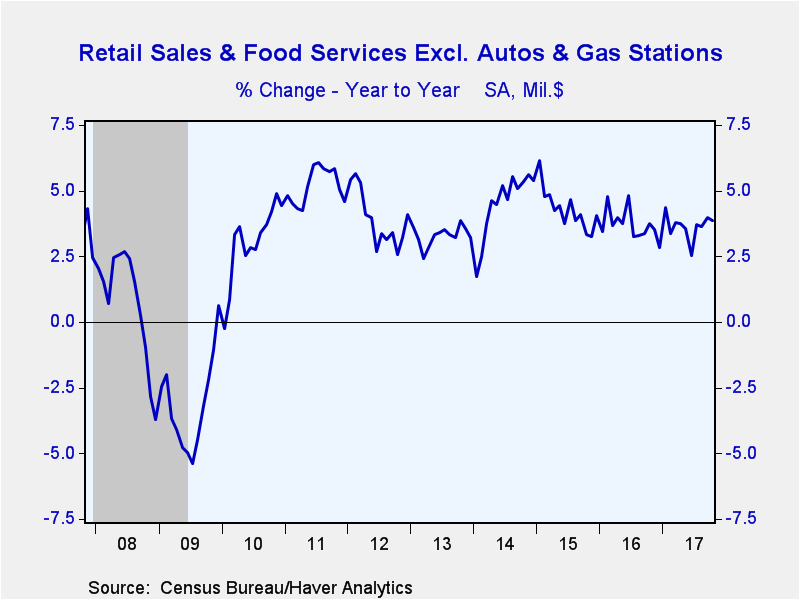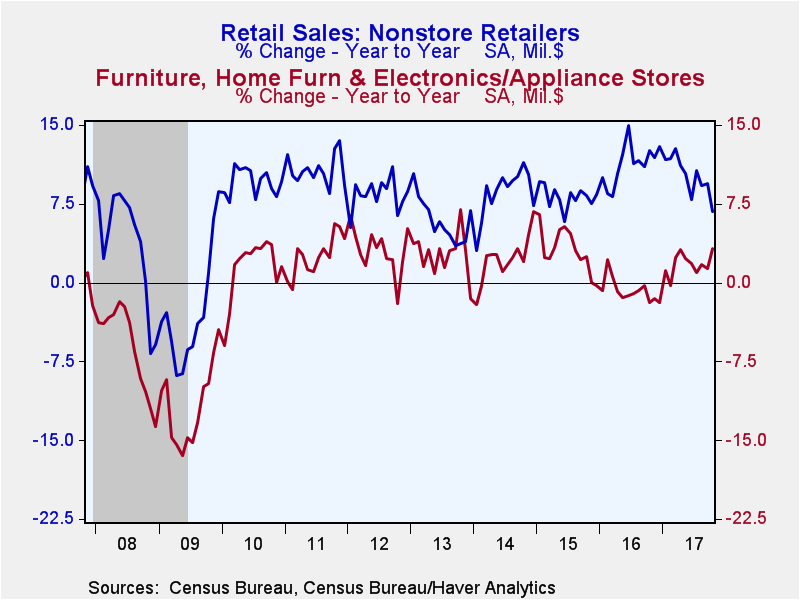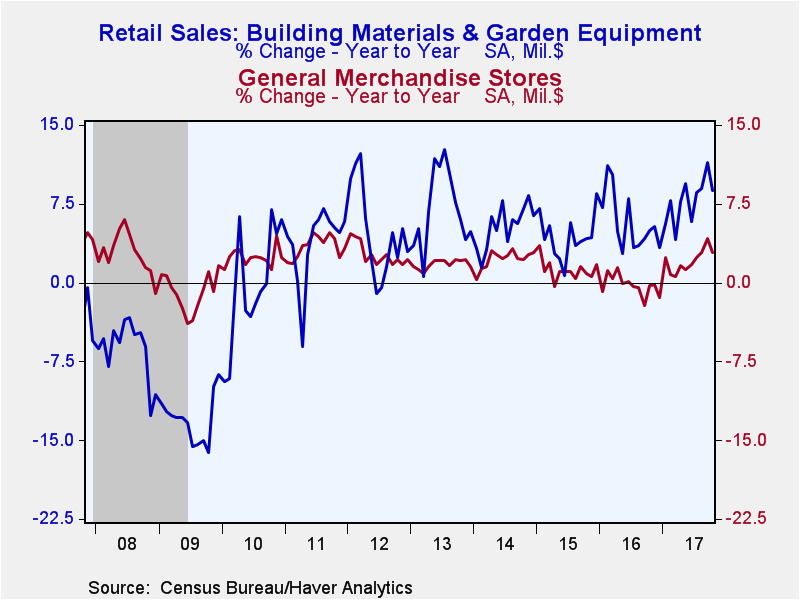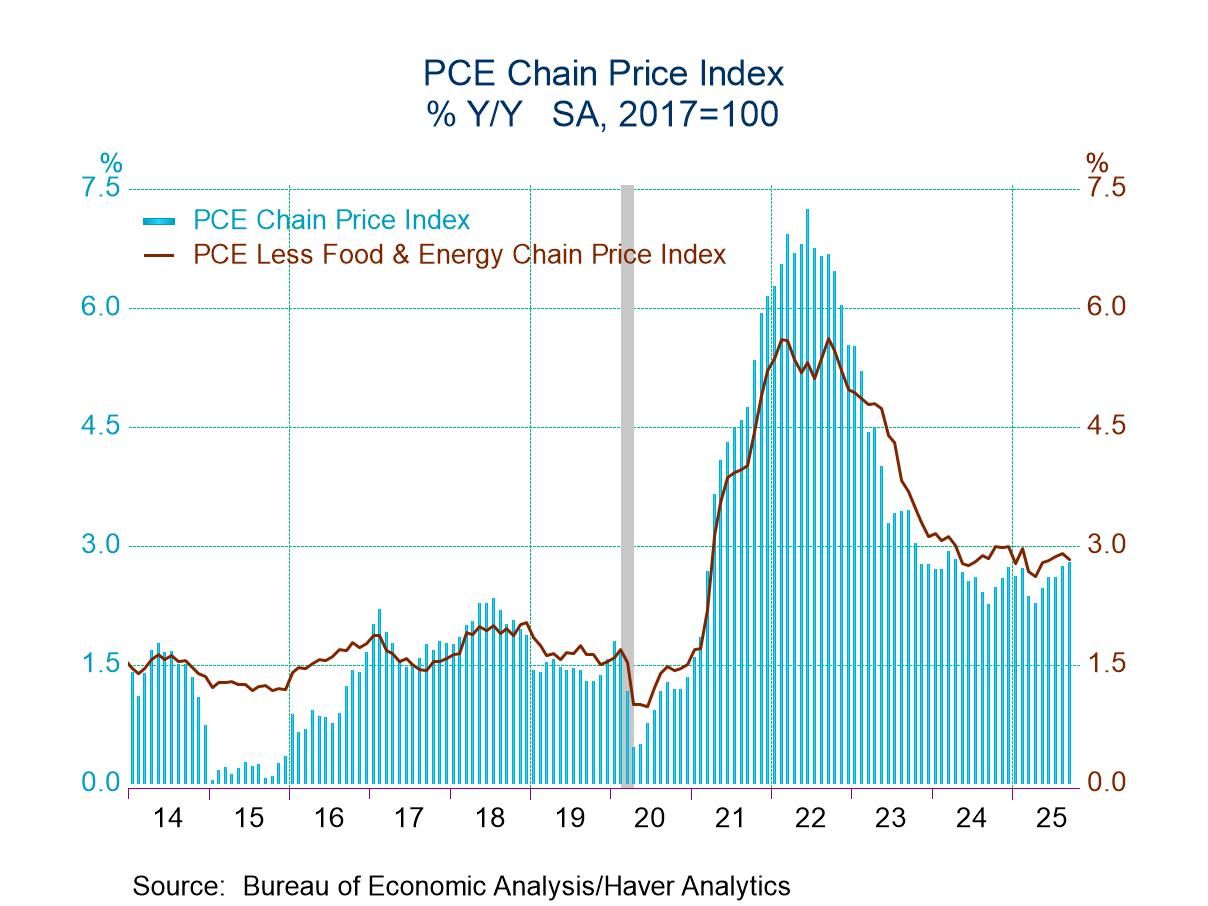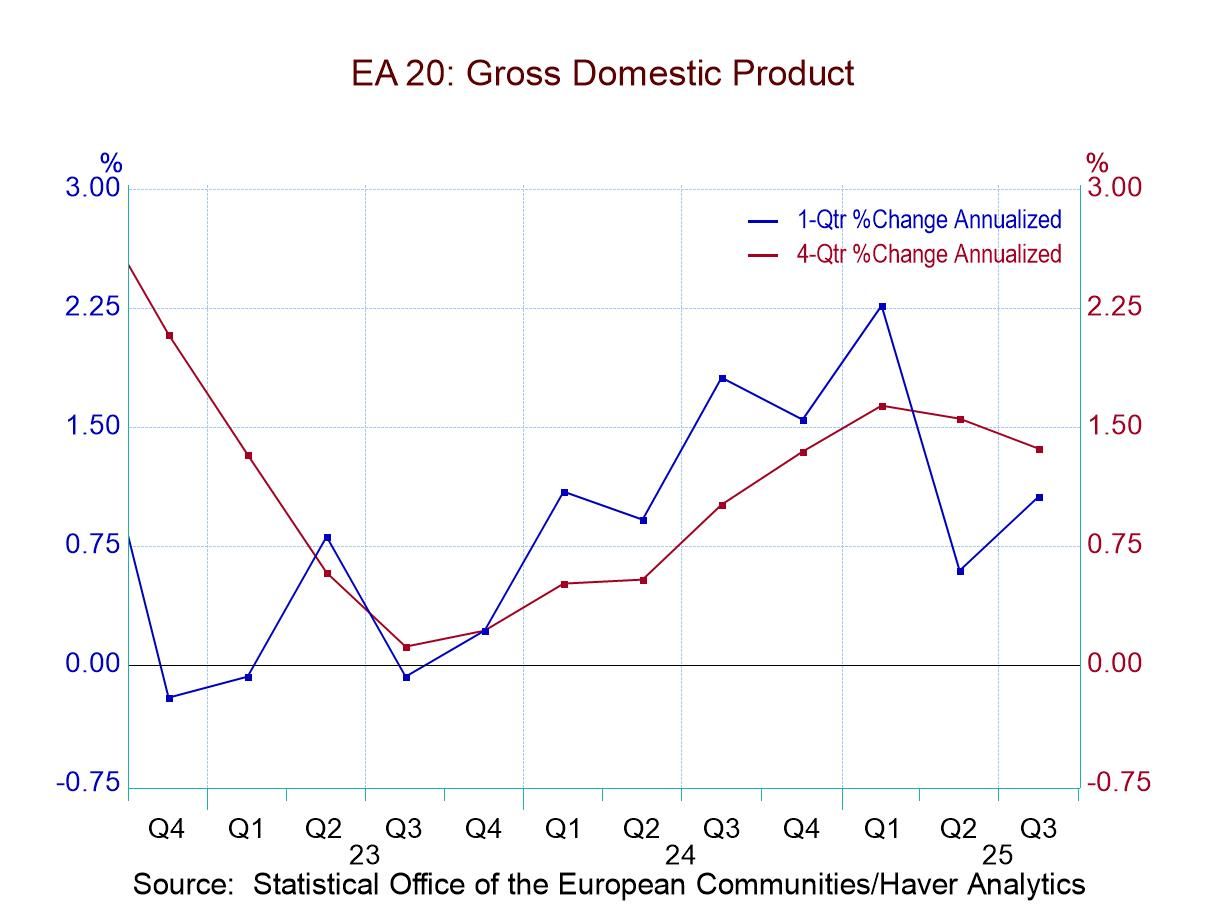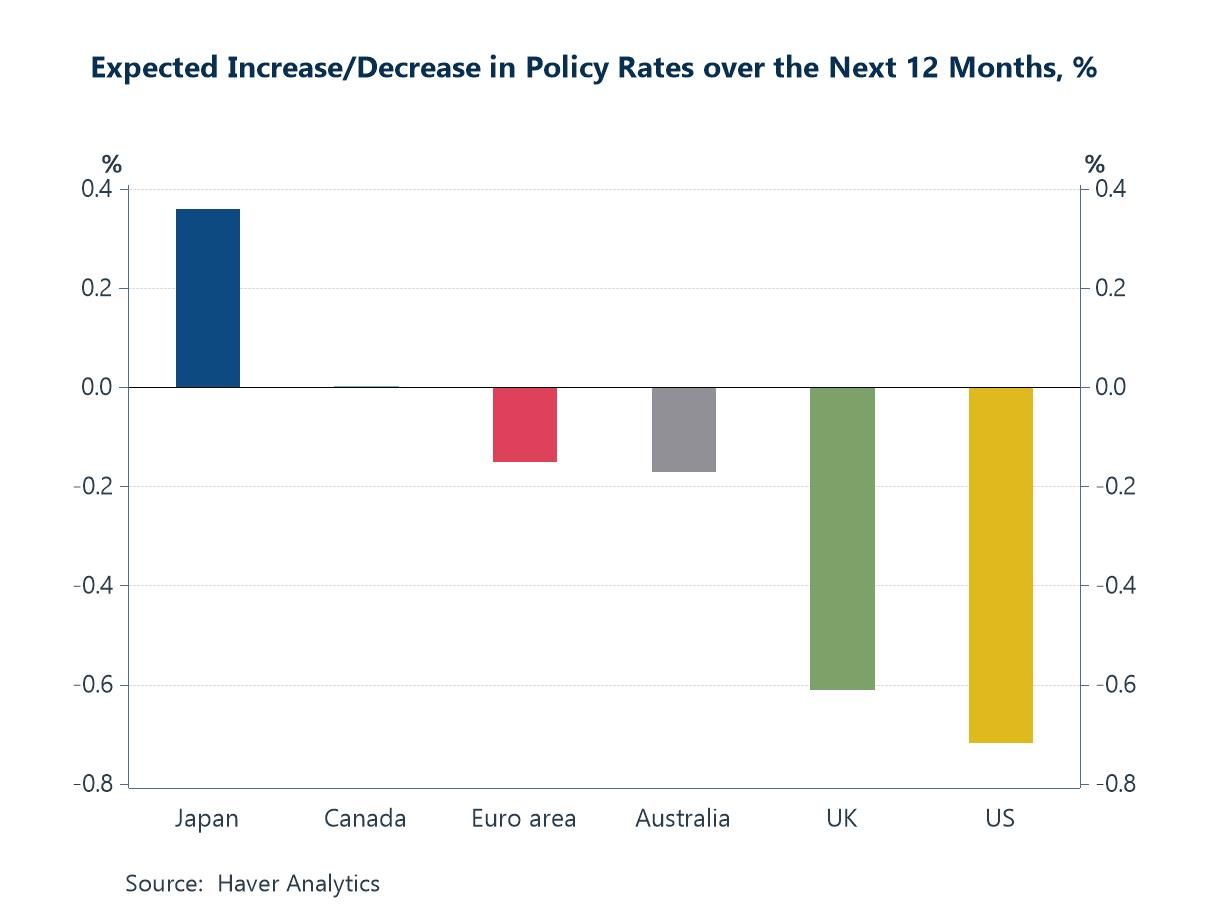 Global| Nov 15 2017
Global| Nov 15 2017U.S. Retail Sales Moderate
by:Tom Moeller
|in:Economy in Brief
Summary
Total retail sales and spending at restaurants edged 0.2% higher (4.6% y/y) during October following a 1.9% September jump, revised from 1.6%. A 0.1% uptick had been expected in the Action Economics Forecast Survey. Much of the [...]
Total retail sales and spending at restaurants edged 0.2% higher (4.6% y/y) during October following a 1.9% September jump, revised from 1.6%. A 0.1% uptick had been expected in the Action Economics Forecast Survey. Much of the moderation in sales growth was due to a lessened 0.7% rise (5.4% y/y) in motor vehicle & parts sales as it followed a 4.6% jump. The increase compared to a 2.6% m/m decline (+1.2% y/y) in unit motor vehicle sales. Retail sales excluding autos nudged up 0.1% (4.4% y/y) following a 1.2% rise, revised from 1.0%. A 0.3% gain had been expected.
A 1.2% decline (+7.4% y/y) in gasoline service station sales also dampened the gain in total retail sales. Higher prices had generated strength during the prior two months. Retail sales excluding autos and gasoline improved 0.2% after a 0.7% rise. Sales growth has been steady near 4.0% y/y since March.
Spending on nonauto discretionary items was uneven last month. Sporting goods & hobby shop store sales jumped 1.5% (-2.4% y/y) following weakness since February. Apparel purchases strengthened 0.8% (0.4% y/y) after a 0.1% uptick. Sales of furniture & home furnishings increased 0.7% (4.8% y/y) after a 0.1% rise. Electronics & appliance store sales also rose 0.7% (2.1% y/y) following a 0.3% gain. To the downside were building materials and garden equipment store sales which declined 2.1% (7.7% y/y) following a 0.6% rise. Sales at nonstore retailers were off 0.3% (+9.6% y/y) after a 0.6% increase. General merchandise store sales eased slightly (+1.4% y/y) following a 0.3% rise.
In the nondiscretionary spending sector, food & beverage store sales rose 0.7% (2.3% y/y), about as they did in September. Health & personal care store sales jumped 0.8% (4.8% y/y) following stability in the prior month.
Restaurant sales improved 0.8% (2.2% y/y) following a 0.1% uptick.
The retail sales data can be found in Haver's USECON database. The Action Economics forecast is in the AS1REPNA database.
| Retail Spending (%) | Oct | Sep | Aug | Oct Y/Y | 2016 | 2015 | 2014 |
|---|---|---|---|---|---|---|---|
| Total Retail Sales & Food Services | 0.2 | 1.9 | -0.1 | 4.6 | 3.2 | 2.6 | 4.3 |
| Excluding Autos | 0.1 | 1.2 | 0.5 | 4.4 | 3.0 | 1.4 | 3.8 |
| Non-Auto Less Gasoline | 0.2 | 0.7 | 0.1 | 4.0 | 3.9 | 4.2 | 4.6 |
| Retail Sales | 0.2 | 2.1 | -0.1 | 4.9 | 2.9 | 1.9 | 4.1 |
| Motor Vehicle & Parts | 0.7 | 4.6 | -2.0 | 5.4 | 4.1 | 7.3 | 6.4 |
| Retail Less Autos | 0.0 | 1.4 | 0.5 | 4.7 | 2.5 | 0.4 | 3.4 |
| Gasoline Stations | -1.2 | 6.4 | 3.4 | 7.4 | -5.7 | -17.6 | -2.0 |
| Food Service & Drinking Places Sales | 0.8 | 0.1 | 0.2 | 2.2 | 5.9 | 8.1 | 6.1 |
Tom Moeller
AuthorMore in Author Profile »Prior to joining Haver Analytics in 2000, Mr. Moeller worked as the Economist at Chancellor Capital Management from 1985 to 1999. There, he developed comprehensive economic forecasts and interpreted economic data for equity and fixed income portfolio managers. Also at Chancellor, Mr. Moeller worked as an equity analyst and was responsible for researching and rating companies in the economically sensitive automobile and housing industries for investment in Chancellor’s equity portfolio. Prior to joining Chancellor, Mr. Moeller was an Economist at Citibank from 1979 to 1984. He also analyzed pricing behavior in the metals industry for the Council on Wage and Price Stability in Washington, D.C. In 1999, Mr. Moeller received the award for most accurate forecast from the Forecasters' Club of New York. From 1990 to 1992 he was President of the New York Association for Business Economists. Mr. Moeller earned an M.B.A. in Finance from Fordham University, where he graduated in 1987. He holds a Bachelor of Arts in Economics from George Washington University.


